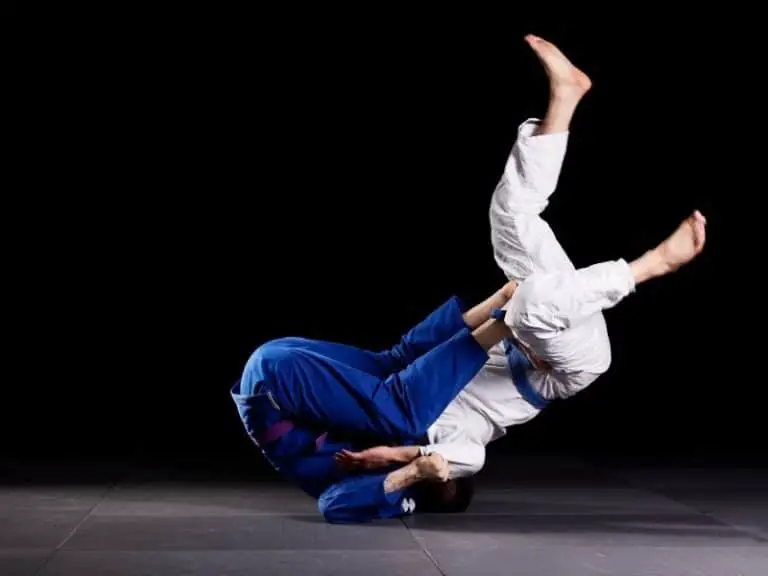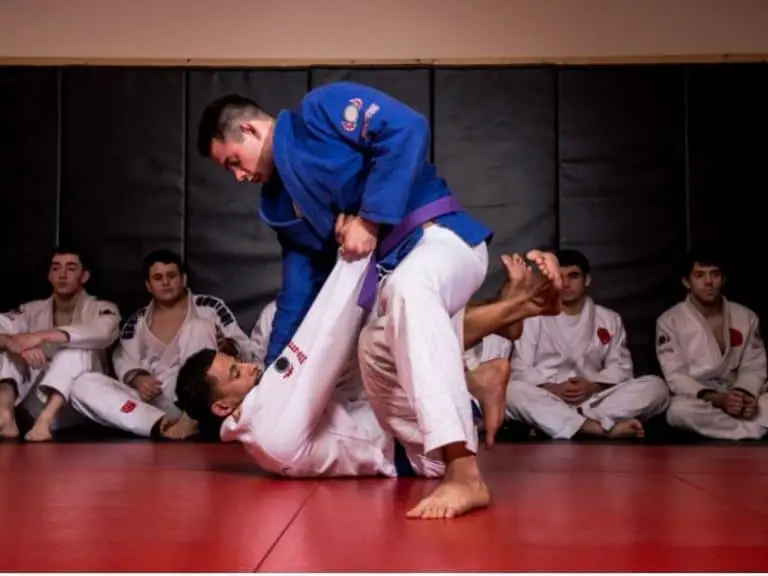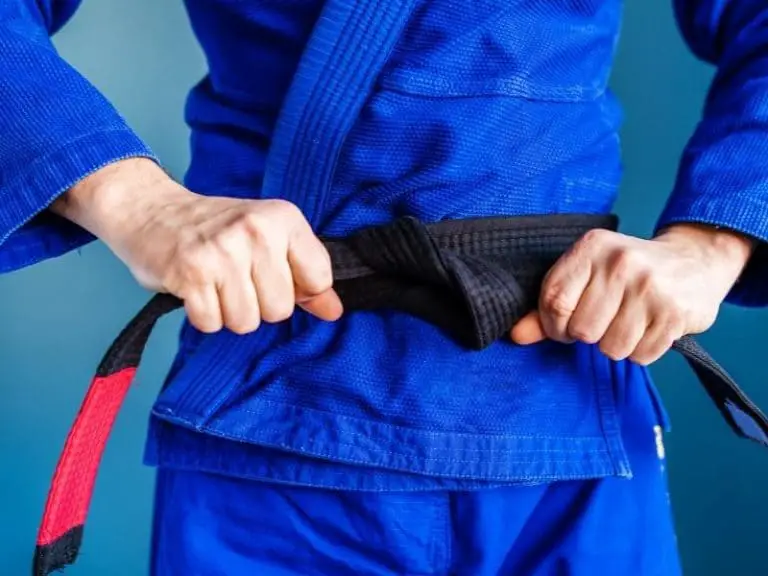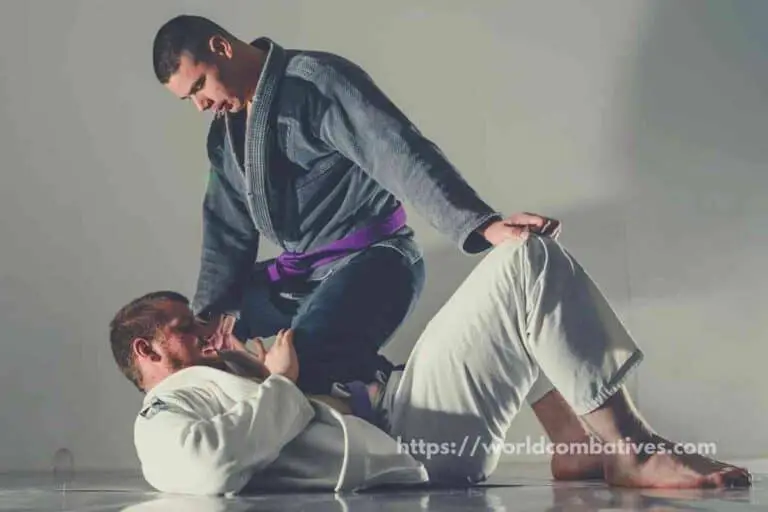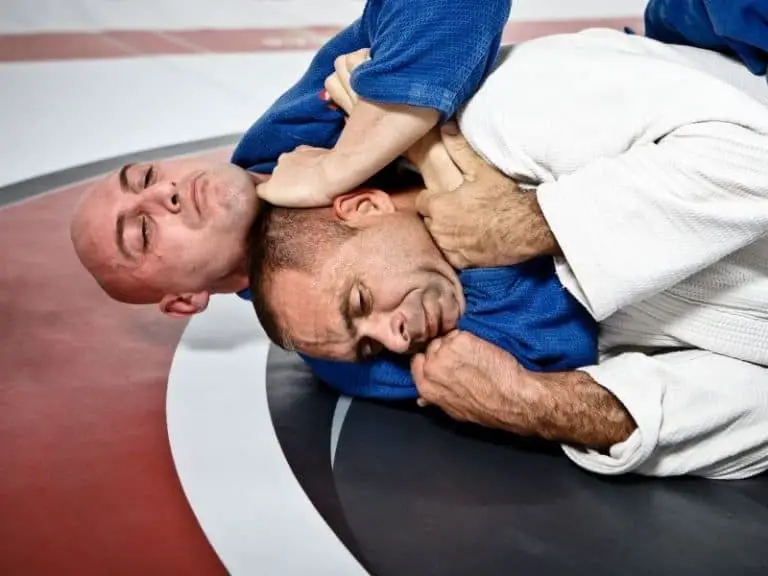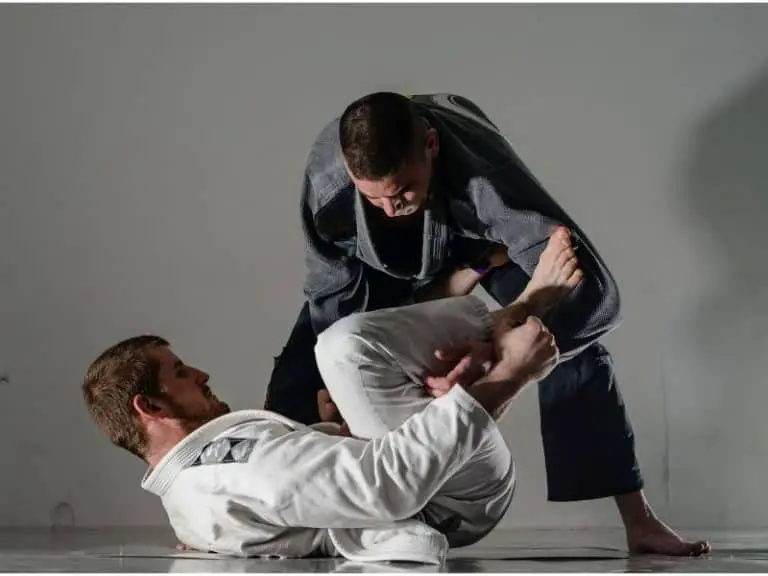How Hard is it to Learn or Master Jiu Jitsu?
Brazilian Jiu Jitsu maybe one of the hardest martial art to learn or master. It is common to see only 10% of white belts going to Blue Belt and only 1% from those Blue Belt reaching black belt. This means only 0.01% becomes a black belter. But is Jiu Jitsu really that hard?
Jiu Jitsu is really a hard martial art to learn. With only 0.01% of White Belters reach the Black Belt. This is because the approach of this martial art is very different from the others. It is focused on grappling while others are on striking. Futhermore, skill is more important here than strength.
But what makes Jiu Jitsu hard? How difficult can it be? Why is Jiu Jitsu hard for beginners with 90% of them quitting before Blue Belt. How long does it really take to be good and what can we do to make progress easier for beginners? Let’s find out.

Is Jiu Jitsu hard?
Jiu Jitsu is hard because it is different from other martial arts. This is because the approach in Jiu Jitsu is grappling which is different from others which focuses on striking. It is so hard that it usually takes at least 8 years to be a black belter.
Take note that the black belt in 8 years are for those who are really training a lot and talented in Jiu Jitsu.
For most people, it takes 10 to even 15 years just to reach a black belt in Jiu Jitsu.
This martial art consist of multiple moves, how to use them and skill application that makes it hard.
Even someone who is a veteran in other martial art such as boxing, karate or taekwondo will have a hard time in Jiu Jitsu.
This is because their approach is different. Most martial arts focused on strikes.
In Brazilian Jiu Jitsu, strikes are not allowed. This is a grapple type of martial art which is very different.
If you are interested in an article more in depth in if punching and kicking, and why it is not allowed in Brazilian Jiu Jitsu, you may check this article: Is striking allowed in Brazilian Jiu Jitsu
This makes people who focuses on strikes and strength lose in Brazilian Jiu Jitsu because it is so unique compared to others.
How Difficult is Jiu Jitsu?
Jiu Jitsu is very difficult because of how their training is designed. In Jiu Jitsu, you will match against enemies that are way above your current level or belt. Making it very hard since the enemy’s experience is way more than you. Plus, their approach in fighting is way different compared to other martial arts.
Most people that came from other martial arts will also have a hard time in Brazilian Jiu Jitsu. This is because aside from strikes, speed and strength matters less in Brazilian Jiu Jitsu.
Skill matters here more than anything else.
In a white belt vs white belt match, it may be the strength that counts. But if a very strong white belt fought with a blue belt, prepare to see a stronger one getting beaten till they tap and give up.
That is because skill is more important in Jiu Jitsu. Combine it with a grappling focused match, it will be very hard to master Jiu Jitsu.
Furthermore, there are a lot of white belts with hopes of winning that get matched up with Blue or even Black Belts. In this case, you will just see someone getting toyed.
For a white belt, this is a big strike to their ego and most quit after multiple of these matches.
That is why they say that only 10% of white belts even reach blue belt. Imagine how many loses they experienced before reaching that.
Not only that, some schools are focused on rolls or spars as a means of learning.
While learning from experience is very good, imagine a white belter losing every time they go to the gym. It is hard for them to always accept defeat.
For a white belt vs white belt match. most likely, it will be the stronger one that will win because it will look like a bar fight, but imagine how the weaker one feels that he or she always lose.
Furthermore, you can also be matched against someone 10-15 kilos or 20-30 pounds more than your weight.
Just imagine the difference in strength and if the person is above, most people tap out because they can’t breathe.
That’s why most give up. And did I forget that achieving Blue belt is hard? It usually takes 1-2 years to reach Blue belt.
In other martial arts, it can only take 3 years to get to black belt.
That makes Jiu Jitsu a very difficult martial art to learn.
Why is Jiu Jitsu Hard for Beginners
Jiu Jitsu is hard for beginners because of how the training is designed. Most training is on spars and matches, making the white belter or beginner always lose in a fight. Most give up because of how bad they feel about losing. Plus, there are lots of moves to master just to learn Jiu Jitsu.
The ones who survive the white belt and reach blue belt are the ones who are used to losing.
They are the ones that can keep their ego up because just imagine being defeated every time you train at the gym.
While Jiu Jitsu is a good martial art for beginners and for the older people because it is not focused on strikes and throwing, it will be hard to learn.
Most of us think of strikes, speed, and strength with martial arts. Jiu Jitsu is very different as it is focused on ground fights.
Plus, this is a skill based match with how will you apply the moves being taught in each situation.
That’s why this martial art is also called “human chess”.
Just the amount of pressure is enough for beginners to lost hope in this martial art. Imagine being told that for a gifted person, it takes 8 years to be a Black Belter.
Most will lost hope.
The fastest person who reached black belt took 3 years and 4 months, that is BJ Penn which is a famous MMA Fighter.
And most of us will take 10-15 years for the black belt.
How long does it take to be good at Jiu Jitsu?
As a general rule, it takes around 1-2 years for a person to be good in Jiu Jitsu. Good in the sense that he or she has reached Blue Belt. Reaching Black Belt is a different story that can take about 8 to 15 years. 8 years is only possible for people who can train full time.
Getting to Blue Belt is already a hard journey, but at that level, you already know moves that can give you an advantage in matches.
But you are still in the bottom at that point.
People who are higher belts than you can easily beat you and you still need to train hard.
It will be extremely hard as a blue belter. Because white belters love you as their target.
Since white belts always lost in spars and they know they have no chance against black belter, prepare to be their favorite target.
In fact, losing against a white belter will be harder when at blue belt because you are supposed to be better.
Thus, it is said that only 1% among blue belters reach black belt.
But this can’t be a sad article, here are super easy tips for you to have a faster progress and to prepare you in Brazilian Jiu Jitsu
Tips When You are Learning Jiu Jitsu for a Faster Progress
1. Train A Lot to Quickly Master the Moves
In Jiu Jitsu, you will learn a lot of moves. But the thing to do is to learn and master them one by one.
Don’t be overwhelmed by the number of possible moves. Stick with one, use it a lot and train it. Then move on the next.
Remember that in Jiu Jitsu, it is the application and mastering of the skill that counts. It doesn’t matter if you know a lot of moves if you don’t know when to use them.
Master them one by one and move on.
2. Understand and Conceptualize the Moves
This is one of the skills that can accelerate learning the moves fast.
Once you learn the moves, it is good to practice them by repetition.
But to accelerate the progress, you have to conceptualize them. Think of how the move is done and when can you use the moves.
This will train your brain to think fast when in sparring or rolling. Since it has already been imagined by your brain that this move is good in a specific situation, you can react faster and can be a way for you to win matches.
Plus, you can conceptualize without moving making it a good practice when you are resting.
3. Learn and Apply Concepts in Rolls and Sparring
Now that you have learned by practicing and conceptualizing the moves, it is time to apply them in rolls.
Remember that experience is your best teacher and by doing it in actual matches, you can see and further improve your analyzation and conceptualizing skills on the moves.
Plus, you can see things that you haven’t thought of when conceptualizing, such as how the enemy will counter your moves.
4. Get Protective Equipment to Prevent Injuries
Do you know how long will it take for you to be back if you got injured? A lot of time.
Time that should be made for training will be used to recover. This is also another reason why many quit.
The cheapest way to prevent injury is to give up and not force things. It is better to lose than to suffer injury.
Here are my four recommended equipment for you to bring when practicing and sparring.
Only 4 are necessary and if you are wondering why I only recommend four, you may check this article: Are you Too old for Brazilian Jiu Jitsu?
That article is focused on older people who start Brazilian Jiu Jitsu to avoid injuries, but you also need to know why those four are really important.
5. Study From Your Losses to Improve
Most people get annoyed when losing and just accept it and move on.
But the good ones who progress fast analyze their matches and see when they made mistakes, where can they improve, and what other moves they should’ve made.
This comes together with conceptualization. Analyze where you did wrong, conceptualize the moves that need improvement.
Practice them and you will see improvements at a faster rate.
Remember that experience is still the best teacher and that’s why most BJJ schools are focused on rolls for learning.
6. Limit Your Moves when Fighting and Master them
This might seem counter-intuitative but as a beginner, it is better to master a few moves than just know them all.
This is because this is a match where application of skills and moves is more important than everything else.
Have a group of moves that you’ve learned and master them. Learn when you can apply those moves and you will see that you can improve faster and win more matches.
It is a pain to see someone who knows a lot of moves but can’t use them in matches. It is better to know fewer and instantly know when to use them.
I recommend master 2-4 moves on each of the following:
- Standing Up
- Guard
- Half-Guard
- Side-Control
- Mount
- Back Mount
Master 2-4 moves in each of them, It is wise to move on once you’re really fast in knowing when to use each move.
That means you’ve mastered the move.
Then start adding more moves to make you better. This is what I found is the best to have a very fast progress. It’s not how many moves you know but how many you’ve mastered.
7. Always Think You are Weaker than Your Opponent
The biggest enemy if you are a beginner in Jiu Jitsu is the ego.
If you always think that you are stronger so you should win then you are at the wrong martial art.
Skill is more important here. Although strength, speed and weight also matters, skill is much more important.
Always think you are weaker so that losing will not be as painful. Remember that you will experience a lot of losses before reaching Blue Belt and it will get worse.
8. Accept Your Loss and Ego can Prevent You From Improving
Instead of getting frustrated when you lost, why not just practice accepting your ego and move on.
Not just move on, analyze the match.
Which moves you’ve done are wrong? How were they able to counter you fast? How can you make your moves more fluid?
Study them and see how you can improve, conceptualize and master your selected moves.
9. Think like a Beginner Especially if you came from other Martial Arts
Most people who came from other martial arts have a high ego when starting Brazilian Jiu Jitsu.
This is the wrong approach because most likely, you came from a very different martial art.
In Jiu Jitsu, you are not allowed to punch or kick. Speed is not much important. It is a grappling match.
Keep your ego high and most likely, you will just quit even before reaching blue belt.
Remember to be humble and have a beginner’s mindset.
That way, you will be able to learn moves fast.
Use all of the tips above and you will see your progress so much faster than others. Goodluck!

worldcombatives.com is reader-supported. When you buy through links on the site, I earn an affiliate commission.
Welcome to my recommended list of Jiu-Jitsu gear.
In this section, you are going to see my recommended Jiu-Jitsu gears both for beginners and pros.
Grappling Shorts
When getting some grappling shorts, you first need to understand that the thing we are looking for in grappling shorts is the ones that will provide flexibility.
This means that we are not looking at designs but what we are looking for is how comfortable it is and if you can do a full range of motions while wearing the shorts.
If that’s the case, I recommend an IBJJF approved grappling short which has no pockets that can interfere with rolls, and most importantly, allows a full range of motion. This can help you in rolls since you need to have fluid motions to do some maneuvers.
Here is the link for the product: BJJ Shorts
Grappling Spats
Grappling spats are a great alternative to Grappling shorts and are sometimes used in conjunction with Grappling shorts.
The reason for using a Grappling spat is to prevent friction.
Remember that BJJ is focused on rolls, locks, and takedowns. This is prone to friction that can cause injuries such as burns and mat cuts.
In choosing a good pair of grappling spats, you need to take note that it is important that it is also flexible so you can easily do some full-range motions while rolling.
Furthermore, since you will be covering your whole legs with it, it is important for it to absorb some sweat while still being comfortable for the wearer.
If that’s the case, I recommend these Grappling Spats which are very stretchable making them good for fluid motion. Furthermore, it is well made to handle friction which prevents any unwanted injuries.
Lastly, its cloth is breathable which means that it is very comfortable for your skin.
Here is the link for the product: Grappling Spats
Rashguard
Think of a rash guard as the grappling spat for the upper body.
Rashguard helps in preventing friction that can cause injuries such as mat cuts and burns.
When finding one, it is important to find a comfortable rash guard which is breathable. Furthermore, have one that allows a full range of motion.
Thus, I recommend this rash guard which does all of the functions I’ve said: Rashguard
Knee and Elbow Pads
Personally, I am a victim of a knee injury. That’s why I always tell people to use knee and elbow pads when doing some physically intensive activities such as BJJ.
Because of my injuries, I can’t really last long with any sort of long physical activity.
So, while it is often neglected, I believe that Knee and Elbox pads are important.
Good Knee and Elbow pads are supposed to be comfortable while still providing maximum protection to both your elbows and knees.
Thus, I recommend these safety gears:
Ear Protectors
There are lots of cauliflower ear incidents with BJJ practitioners.
Even if this is quite an unpopular safety gear, it is important as we are preventing friction that can come from rolls.
In choosing an ear protector, you do not need to get something that protects you from strikes. Striking is usually not allowed.
So, what’s important is to find something that is very lightweight and protects you from friction.
If that’s the case, then you may opt for this which is really useful and won’t look weird on rolls: Ear Guards

